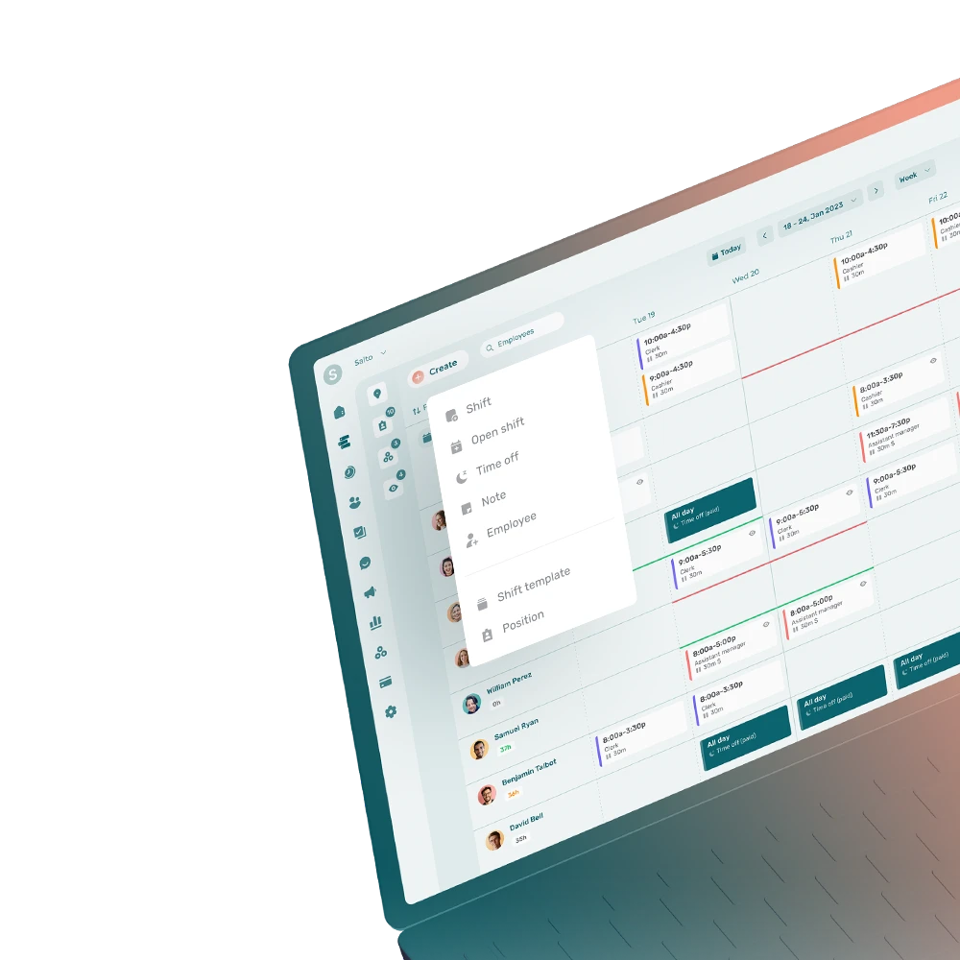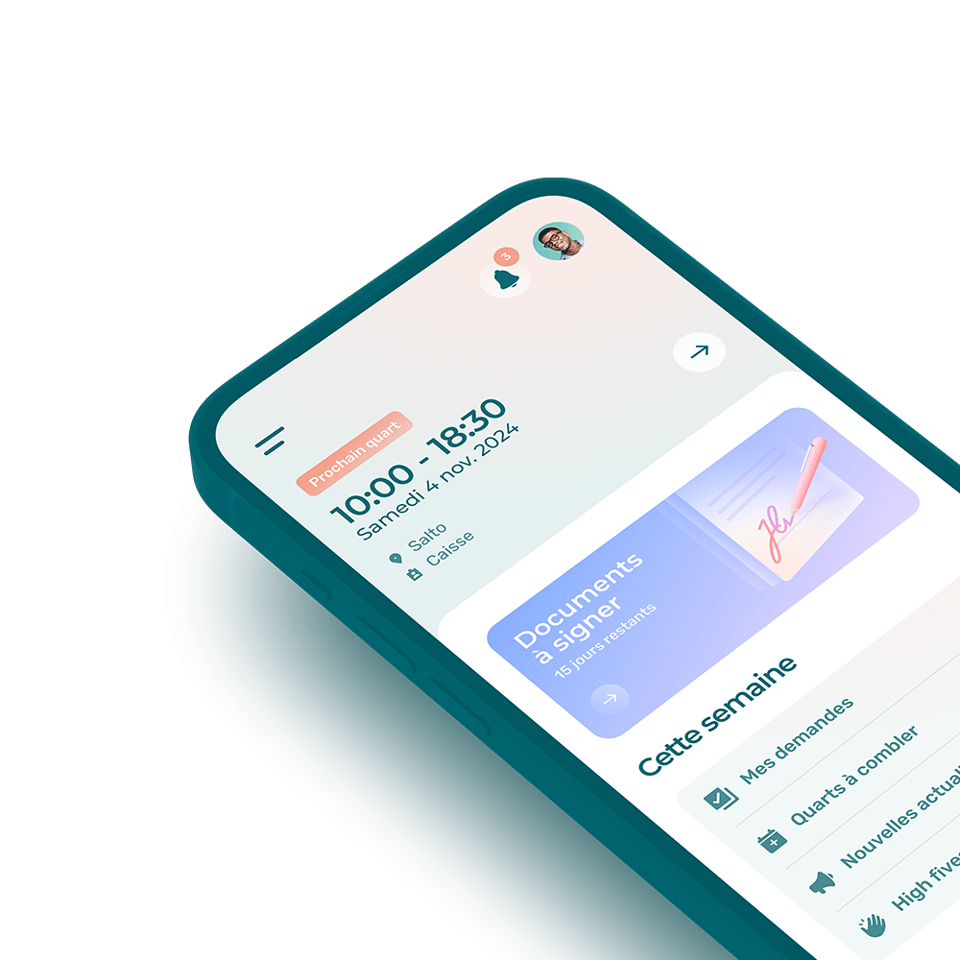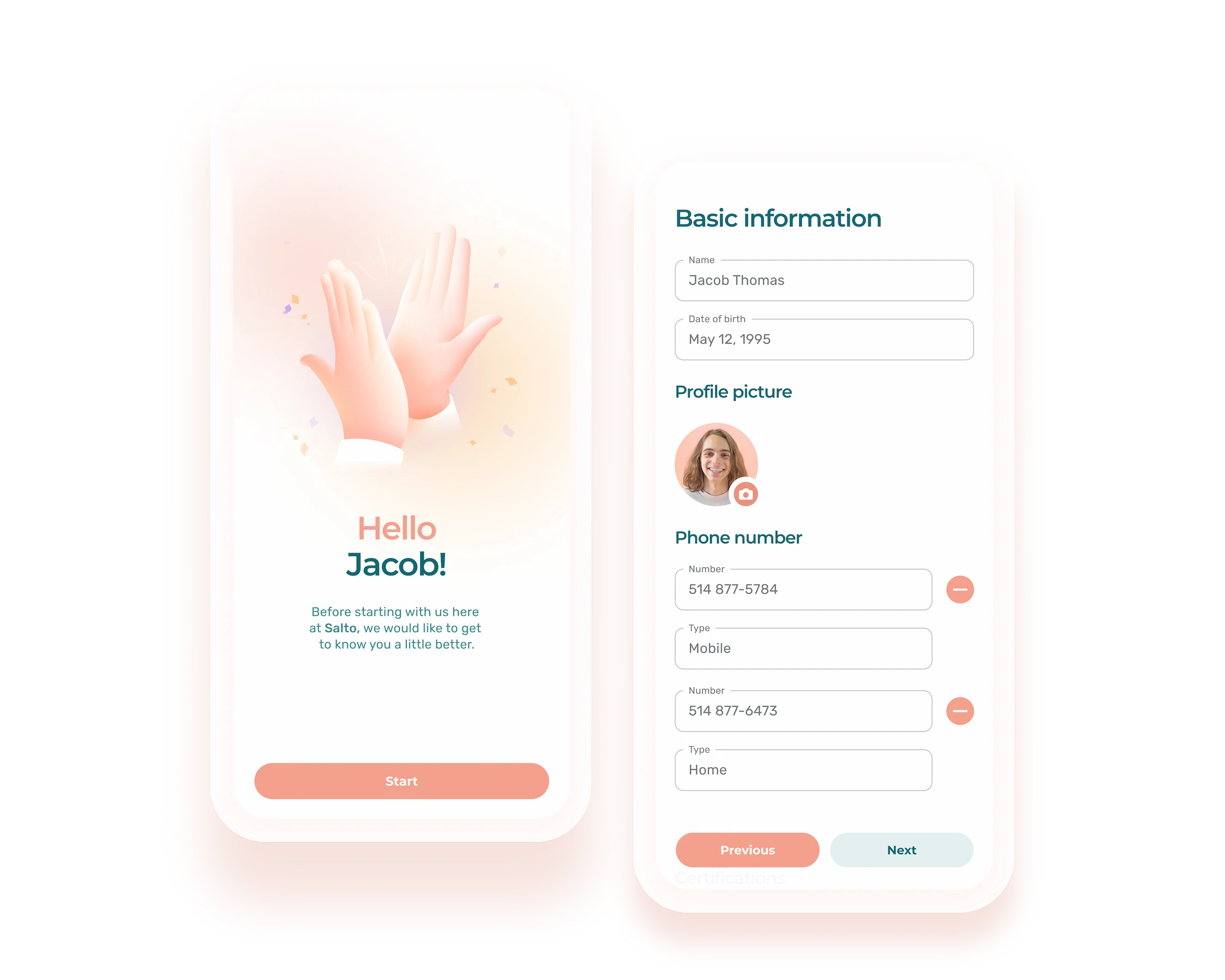Onboarding is a formal process covering all the steps required to structure a new employee’s arrival, welcome, integration and follow-up at a company.
What Does Onboarding Include?
Onboarding extends far beyond the first day of orientation. The process will vary significantly in content and duration from company to company depending on the nature of the new employee’s position and work experience.
The following business needs are common upon a new employee’s arrival:
- Preparing for their arrival (ex.: confirming the arrival date and time, putting in access requests, getting supplies and tools ready)
- Scheduling the welcome day
- HR, technology or working-condition-related processes
- Performance and satisfaction evaluation
What Are the 4 Stages of HR Onboarding?
Onboarding, or HR onboarding, generally has 4 steps.
1. Pre-onboarding
This step begins as soon as the new employee accepts the job offer and goes up to their first official day at work. During pre-onboarding, the manager helps the future employee fill out all necessary documents for the hiring process. The manager also needs to maintain contact in order to provide the new employee with all the necessary information upon their arrival.
2. Welcoming the new employee
The manager then introduces the employee to the company culture and shows them around the workplace. This step also includes organizing meetings with the new employee’s team members and familiarizing them with the formalities of their job (insurance, work hours, payroll, etc.). The manager makes sure that the new recruit gets up to speed on their new work environment.
3. New employee training
This step is paramount as it directly impacts the new employee’s success. The manager must provide support and all necessary tools so they can do their job properly. Companies can also assign a mentor to provide a new employee with further assistance.
4. The new employee’s job integration
Once integration is complete, the employee should be able to perform their duties independently. To this end, the manager can identify specific goals so that the employee knows the expectations for their position. A performance evaluation can also be scheduled after a few months to provide the employee with helpful feedback.
What Are the Benefits of an Effective Onboarding Process?
The benefits of a good onboarding process generally include:
- Attracting talent
- Improving the company’s employer brand
- Recruiting more qualified employees
- Building employee loyalty more quickly
- Reducing the company’s turnover rate
- Enhancing employee productivity
- Lowering stress for new employees
- Improving communication at the company
Why Establish an Onboarding Process?
An onboarding process enables new employees to integrate more easily into their work teams and to develop independence more rapidly.
Companies that choose to implement a solid onboarding plan enjoy many benefits, such as having more engaged and productive teams.
How Long Does Onboarding Take?
The length of the onboarding process may vary according to the employee’s needs and the company situation. Generally, it takes 3 to 6 months.
Onboarding is considered complete when the employee can perform their duties entirely independently.









